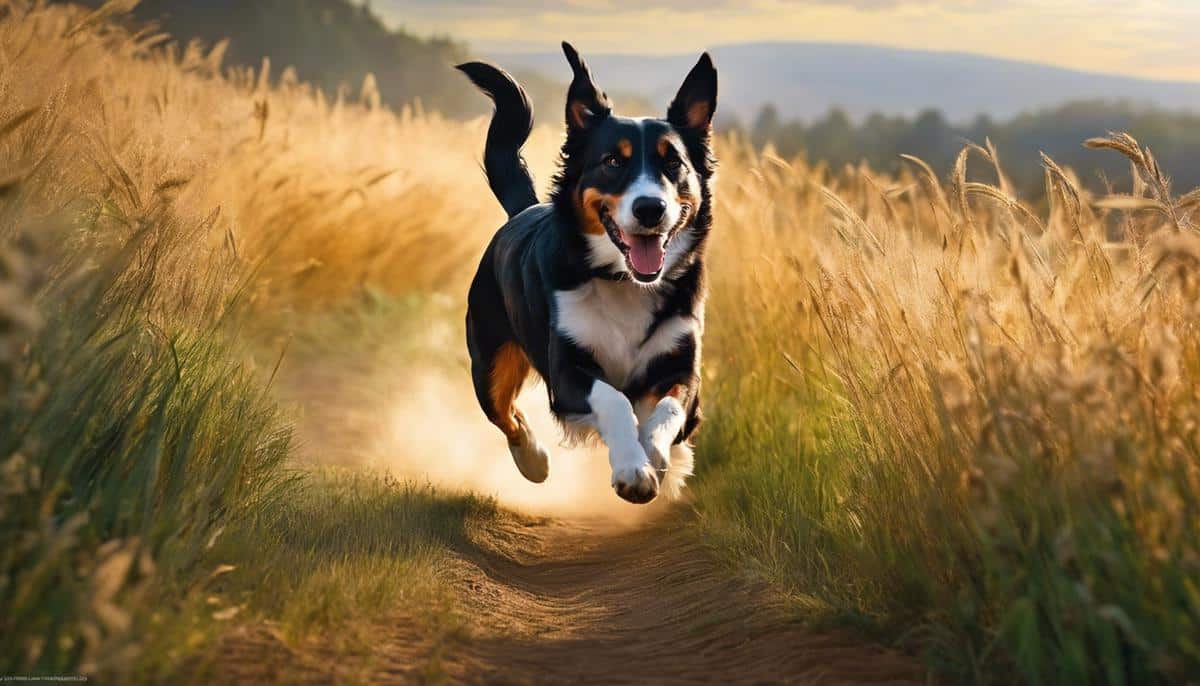
For many pet parents, the great outdoors is a place of adventure and bonding with their canine companions. But what happens when your furry family member is gripped by an overwhelming fear of stepping outside? Understanding the root of this anxiety is pivotal to finding a path toward confidence and joy in the natural world.
This exploration begins by delving deep into the psyche of our four-legged friends, unlocking the mysteries of dog fear and its causes. From unraveling the history of negative experiences to addressing their lack of socialization, or tackling the complex world of genetic predispositions, we embark on a journey to alleviate these fears and enrich our dogs’ lives. Along the way, we will unearth the subtle yet profound signs that indicate a dog’s discomfort and pave the way to overcoming it.
Understanding Dog Fear and Its Causes
Unraveling the Mystery: Why Some Dogs Fear the Great Outdoors
Hey there, dog lovers! Have you ever noticed your furry friend acting a bit nervous or scared when it’s time to step outside for their daily walk or backyard playtime? It’s not all that uncommon, and there are some clear reasons why some dogs might be less than enthusiastic about the great outdoors. Let’s dig into the common causes of fear of the outdoors in dogs and see if we can’t help our four-legged pals enjoy the sunshine and fresh air a bit more.
1. Lack of Early Exposure
First off, puppies have what’s called a ‘critical socialization period.’ This is when they’re super open to new experiences, which typically happens before they turn about 14 weeks old. If a pup doesn’t get the chance to explore the outdoors during this key time, they might grow up to be a bit hesitant about it. It’s like never trying a bike as a kid and then being a bit wobbly when you try riding one as an adult.
2. Scary Experiences
Imagine you’re chilling outside and suddenly a loud noise, like a firecracker, goes off. Scary, right? Well, dogs can have the same reaction. If they’re outside and something startles them, like a loud noise or a bigger animal popping up out of nowhere, that experience can stick with them, making them spooked about heading out again.
3. Separation Anxiety or Over-Attachment
Some dogs are like that best friend who never wants you out of their sight. When they’re outside, they might feel too far from their humans, which can cause some serious stress. Dogs that struggle with separation anxiety might associate the outdoors with being separated from their beloved owners, turning a backyard into a place of anxiety.
4. Health Issues or Physical Discomfort
Ever had a sunburn and then not wanted to go back into the sun? Dogs can have similar associations with the outdoors. If they’ve got health issues, like arthritis, or something’s causing them pain when they’re outside, they’ll naturally be wary about going back out. Also, extreme temperatures can be pretty uncomfortable for them, just like they are for us.
5. Lack of Confidence
Just like people, dogs can be shy or unsure about things they’re not familiar with. If a dog isn’t full of confidence, they might find the unpredictable nature of the outdoors – all those new smells, sounds, and sights – a bit overwhelming.
6. Lack of Proper Training
Dogs love to understand what’s going on; they thrive on routine and clear expectations. If a dog hasn’t been trained on how to behave outdoors or they’ve received mixed signals about the outside world, it could lead to an outdoor phobia. They need to know the outdoors is a fun, safe place where good things happen, like treats and playtime.
Getting to the bottom of why a dog might fear the outdoors is the first step in helping them overcome that fear. By recognizing the signs and understanding the causes, dog owners can start to work with their pets by slowly and safely introducing them to the wonders of nature. With patience and plenty of positive reinforcement, even the most timid dog can learn to love a romp in the park or a leisurely stroll around the neighborhood. Good luck, and enjoy exploring the big, wide world with your canine companion!
Techniques for Gradual Desensitization
Heading: Easing Your Dog’s Outdoor Fears: A Gentle Approach
When your four-legged buddy starts trembling at the sight of his own shadow or the rustle of leaves, it’s clear they’ve got some outdoor fears to tackle. Fear not, fellow dog lovers, because helping them overcome these anxieties is totally doable. Here’s a guide to turn those scary outdoors into a pup’s playground.
Step 1: Become the Safe Haven
Dogs are pack animals, and they look to their pack leader for cues on how to behave. Be the calm, assertive leader they need. When outside, keep a relaxed posture and tone of voice. Your furry friend watches you for guidance, so show confidence and calm in the face of their fears.
Step 2: The Mighty Power of Positive Reinforcement
Treats can be a powerful tool in your arsenal. For every brave step your pal takes, reward generously with treats and affection. The goal is to associate good feelings with the outdoors. Just remember to use healthy treats and keep an eye on portions—we don’t want to trade one problem for another!
Step 3: Familiarity Through Regular Exposure
Don’t just wait for the annual fair to roll into town to take your dog out. Regular walks are essential. Start with short jaunts in quieter places, then gradually up the ante. Consistency is key. With each outing, the outside world becomes less intimidating.
Step 4: Gradual Introduction to New Stimuli
It’s like leveling up in a video game—start easy and work your way up. Introduce your dog to new sights, sounds, and smells in a controlled manner. Maybe it’s a quiet street before tackling the bustling downtown, or a calm park before a noisy festival. Let them take their time to sniff around and explore at their own pace.
Step 5: Socialization is Social Learning
Other dogs can be great role models. If your pooch sees their furry peers frolicking without a care, they may be less apprehensive. Dog parks or playdates with confident dogs can help your pet learn that the great outdoors is a fun place, not a fear zone.
Step 6: Distraction is a Distracter’s Best Friend
Got a noisy garbage truck coming your way? It’s the perfect time to pull out a favorite toy or initiate a training session. Redirecting your dog’s attention from the scary noise to an enjoyable activity helps minimize fear responses over time.
Remember, patience is the most important tool in your toolbox. Every dog goes at their own pace; respect it. The goal isn’t to rush, it’s to build confidence and trust. With perseverance and a positive attitude, the world outside your front door can transform from a house of horrors into an adventure park for your furry family member. Happy trails and tails!

Creating Positive Outdoor Experiences
Fun Under the Sun: Tips for a Tail-Wagging Outdoor Experience with Your Dog
So, your canine companion isn’t the most outdoorsy type? Maybe they’re not keen on exploring the vast, green expanses of the local park just yet. Fret not, fellow dog enthusiasts, because there are plenty of effective ways to turn the great outdoors into a playground of joy for your four-legged friend.
First, consider the world from your dog’s point of view. All those big, open spaces can be overwhelming! A good starting place is structured games that give your dog clear rules and goals. Think fetch or frisbee — classics that never fail! Not only do they keep your dog mentally sharp, but they’re incredibly rewarding. Remember, that tennis ball represents not just a toy, but a mission and a tasty treat of success once returned!
Ever heard of doggy playdates? They’re a hot ticket to a confident, happy pooch. Getting your dog to play with other friendly dogs in safe, controlled environments can make a world of difference. Through play, dogs learn social cues and realize that other pups and new environments aren’t so scary after all.
Don’t forget about the sniff-a-thon. Dogs explore the world through their nose. Allowing your dog to sniff around lets them map the environment, making it more familiar and less threatening. So next time you’re out, give your pup time to take in all the exciting new scents. It’s like reading the daily news for them.
Tailoring the environment can also boost your dog’s outdoor comfort. If your pup is ball crazy, bring their favorite ball along on walks. If they throng to their chew toy, let that be their outdoor companion. These familiar items can act like a security blanket for your furry friend.
And then there’s training for outdoor skills. It’s great that your dog can shake hands, but can they sit and stay at the park with distractions all around? Adding a little outdoor-specific training can boost confidence for both you and your furry comrade. Practicing commands in a variety of settings can reinforce obedience and create a sense of control.
Last but not least, every dog has its own pace. Some may sprint into the wide world with ears flapping in the wind, while others take baby steps. As a loving pet parent, recognizing and responding with encouragement to each brave step they take is key. Got a pint-sized pup? They might enjoy a jaunt in a dog-friendly carrier that lets them observe the world from a safe vantage point until they’re ready to explore on their own.
The main idea is to connect outdoor activities to feelings of happiness and security. Before you know it, your dog will associate that big, open door with adventure and fun. It’s all about creating those positive outdoor experiences that will get any tail wagging with excitement.
Just remember, every dog has unique likes and dislikes, just like us. The trick is to tap into those preferences, offer heaps of encouragement, and watch as your dog discovers the wonders of a sunny day spent rolling in the grass or chasing after a frisbee. Here’s to many happy trails and wagging tails!

Professional Assistance and Training
Navigating Fear: When to Seek Professional Help for Your Dog’s Fear of the Outdoors
As passionate hobbyists in the canine companionship world, many have witnessed the joys that dogs experience in the great outdoors. But what happens when a dog exhibits fear instead of frolicking fun outside? It’s a question that many dog owners face, and understanding the right time to seek professional help can make all the difference for our four-legged friends.
Signs that your dog may need professional intervention often extend beyond the usual reluctance to step outside. These indicators can include extreme behaviors that disrupt daily routines or pose potential dangers—to the dog or to others. Here’s a checklist of signs:
-
Intense and Persistent Fear: If a dog’s fear of the outdoors is severe and doesn’t improve despite using all the gentler methods previously discussed, it’s time to consider getting professional help.
-
Physical Manifestations of Stress: If a dog exhibits significant physical symptoms when going outside, like excessive panting, drooling, shaking, or even vomiting, these are clear stress signals. Such physical responses are signs that the dog is not just uncomfortable but genuinely distressed.
-
Aggression as Defense: When a dog reacts aggressively out of fear—such as biting or lunging—during attempts to go outside, this can be a risk to the safety of the dog, the owner, and others. Professional intervention is critical to address aggression.
-
Inability to Function Normally: If fear prevents the dog from engaging in necessary activities like going for walks for bathroom breaks or refusing to leave the house altogether, this can significantly impact their quality of life.
-
Withdrawal or Depression: A dog that becomes withdrawn or shows signs of depression when faced with outdoor activities may need more help than general advice can offer. Observe any changes in your dog’s behavior that lean towards a lack of interest in things they once enjoyed.
Professional help typically comes in two forms: dog trainers and behaviorists, or animal psychologists and veterinarians. Trainers and behaviorists are skilled in corrective behavior techniques that are tailored to each dog’s specific needs. They’re particularly useful for hands-on, practical training solutions. Veterinarians and animal psychologists, meanwhile, can determine if there’s an underlying medical or psychological issue causing the fear and can propose treatments, which might include medication, to help the dog cope.
In summary, turning to professionals isn’t a sign of defeat; it’s an acknowledgment of the complexity of a dog’s emotions and recognizing when they need more specialized care. It’s all about ensuring our beloved companions lead the happiest and healthiest lives possible, both indoors and out. After all, isn’t that what our shared hobby—our devotion to dogs—is truly about?

Embarking on the path to overcoming a dog’s fear of the outdoors requires patience, understanding, and a heartfelt commitment to their well-being. As we integrate gradual desensitization techniques, cultivate positive outdoor experiences, and potentially seek the expertise of professionals, we create a symphony of support for our canine companions. Through dedication to these practices, the world outside can transform from a source of trepidation to a stage of endless possibilities, where every blade of grass and every gentle breeze enriches the bond between dog and owner. The journey may be gradual, but the rewards of witnessing a dog’s newfound courage and the expansion of their horizons are truly immeasurable—a testament to the power of unwavering love and guidance.





